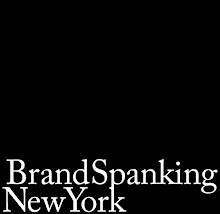one of my finance-major college buddies once if there were other economies besides the financial one. "Why were you guys divinely endowed with the responsibility of overseeing the only supply-demand machine out there?" Of course, what I knew then about business was granular compared to now (and what I know today ain't much either), but that was the beginning of something that would be nurtured by my feeble mind for years.
Back to the question posed lo those many years ago. My buddy Karl replied, "There are other economies you dimwit. It's just that the financial one is the easiest to work with, because first, humans invented it, and since then it's been constantly refined and applied to every aspect of our lives. Next, it's pretty much the only way globally agreed upon to determine the value of things that can't be touched or held, like work and experience and talent. From there you can quantify anything, tangible or not."
Okay, fair enou----
OH MAN. ADVERTISING BREAK. Just now saw the "Cross the Road" spot for Burger King for the first time. CPB's fantastic, but you've got to give the most credit to the client. Someone there has the guts to actually approve this work. Everyone oughta take this as the shining example of how client/shop relationships should work. Of course, advertising is one small element of "brainding," but we'll get to that more later.
"Ugh," I thought. Fast forward a decade and it hits me. Brands are as important to business and consumers as they are invisible. So why so much hoo-ha about brands?
A brand is, simply, a story the brain tells after exposure to a stimulus.
Why else is one of the three primary elements of branding "Constancy" (alongside Clarity and Consistency)? That's just another word for "remind." Operative syllable there: "mind". Branding is a science of the brain. No, we're not brain surgeons, but getting in touch with our inner neurologists wouldn't hurt.
As we know, the brain instantly reacts to stimuli with a story of all the good, bad, ugly, and indifferent chapters of that thing -- a logo or a smell or a mention or a TV spot or even another story -- and its relationship with said brain. And since we interact with these things constantly, the story is always being updated and re-told. The values we assign fluctuate not unlike the numbers on NASDAQ.
My argument is that brains and brands work with an economy built upon four currencies: Money, Information, Loyalty, and Time. (Yeah, I know that spells MILT, but I'm not smart enough to make that useful or funny.)
So, there it is, the basis of my book.
Saturday, August 20, 2005
Subscribe to:
Post Comments (Atom)


No comments:
Post a Comment